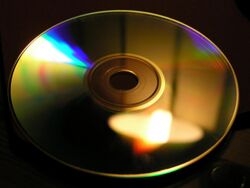Alternative formats
 From HandWiki - Reading time: 3 min
From HandWiki - Reading time: 3 min
Alternative formats include audio, braille, electronic or large print versions of standard print such as educational material, textbooks, information leaflets, and even people's personal bills and letters. Alternative formats are created to help people who are blind or visual impaired to gain assess to their personal and leisure information either by sight (large print), by ear (audio) or by touch (braille).
Audio
Audio information is beneficial for many people and can be used by anyone who owns a CD player, a DAISY player or a computer. Audio enables people who are blind or visual impaired to access information through hearing, in the sense that print readers would understand it.
Choosing audio
Different people are likely to have their own preferences about the way they access audio, depending on their experiences, how comfortable are they with technology, and the equipment they to access the audio content.
CD as a medium for accessing information
Compact Discs (CDs) were first produced in the 1980s to store and playback sound recordings exclusively, and became superior to cassette tapes (AC) offering better sound and size. Standard CDs have a diameter of 120 millimetres (4.7 in) and can hold up to 80 minutes of uncompressed audio (or 700 Megabytes of data). CDs offer some navigation from the beginning of one track to another, rather than having to fast forward or rewind and guess where the tracks started and finished.
Over time, CDs have progressed from being solely for music, to being a format for all kinds of data storage, such as text, images, photos and videos. Educators can use CDs to store educational materials including taped lectures, presentations, and handouts into one compact disc for the student to access on CD players or computers.
Braille
Braille is a tactile system of raised dots that enables people who are visual impaired or blind to access information by touch. The pattern of raised dots is arranged in cells of up to six dots, creating a total of 63 different combinations possible. Each cell represents an alphabet letter, numeral or punctuation mark. Some frequently used words and letter combinations also have their own single cell patterns.
Braille can be the building block for language skills and a way to teach spelling, grammar, and punctuations to people with vision loss or who are deaf-blind. Not only do Braille codes represent alphabets, they also denote numbers, symbols, music and mathematical notations, enabling people to learn about different subjects in a different way from most of us. Braille books are available in all subject areas, ranging from modern fiction to mathematics, music and law. As with printed text, Braille makes it possible for people to access information in this format.
Electronic (e-text)
For many of us, having access to computer equipment and appropriate software makes written information accessible. Today’s technology allows people to do majority of their research online, share documents via email, and download lecture notes from school websites. With written text converted into a format that is readable on the computer, it can be accessed visually with screen magnification software, or through auditory means with text-to-speech technology.
Large print
Large print is essential for people who have visual or learning difficulties and have trouble reading fine print or deciphering crowded text at one time. Large print usually ranges from 16 to 22 point, while giant print uses fonts that are bigger than 24 point.
Having one single size will not meet everyone’s needs; therefore, it is important to find out which is a comfortable reading size for each individual. Research has demonstrated the positive impacts of providing enlarged font size for people with mild to moderate visual impairments, resulting in an increased reading fluency and speed.
34 views | Status: cached on July 17 2024 07:40:03
↧ Download this article as ZWI file
 KSF
KSF


